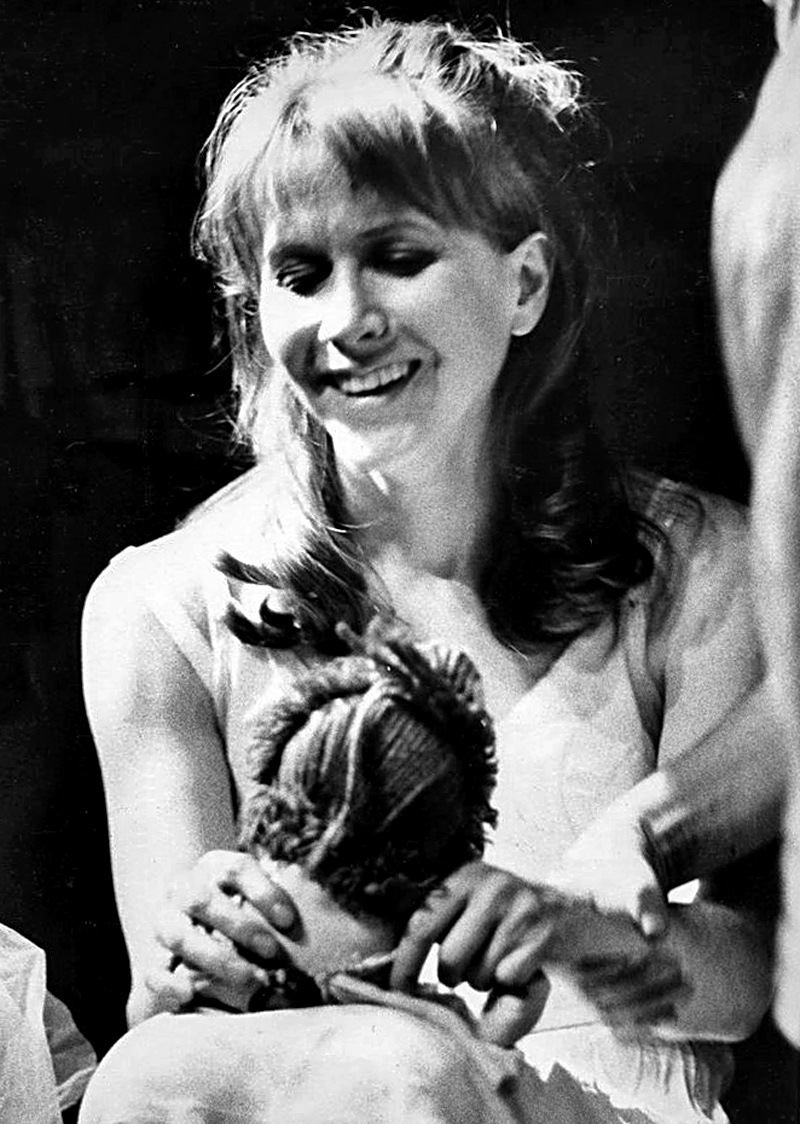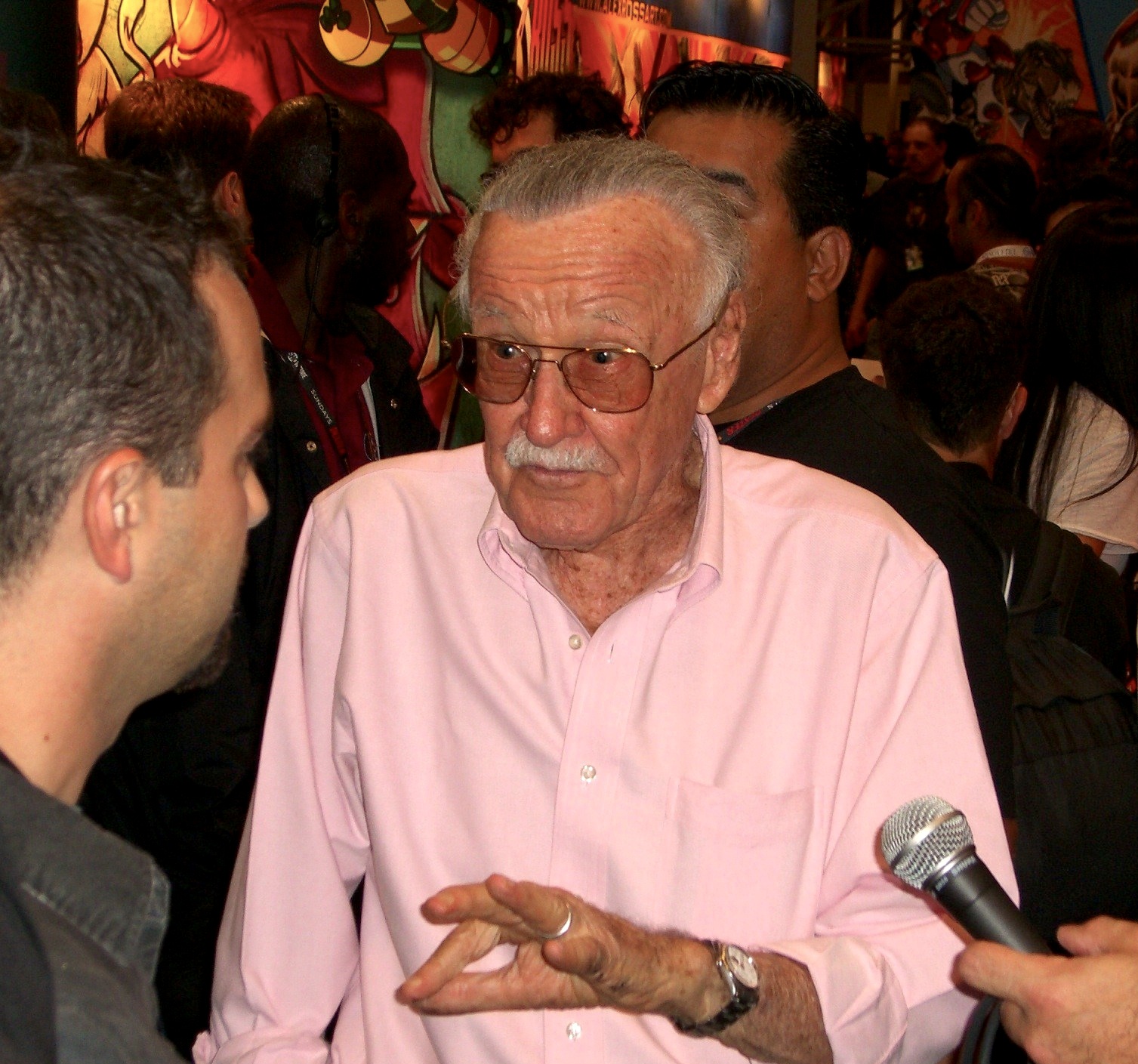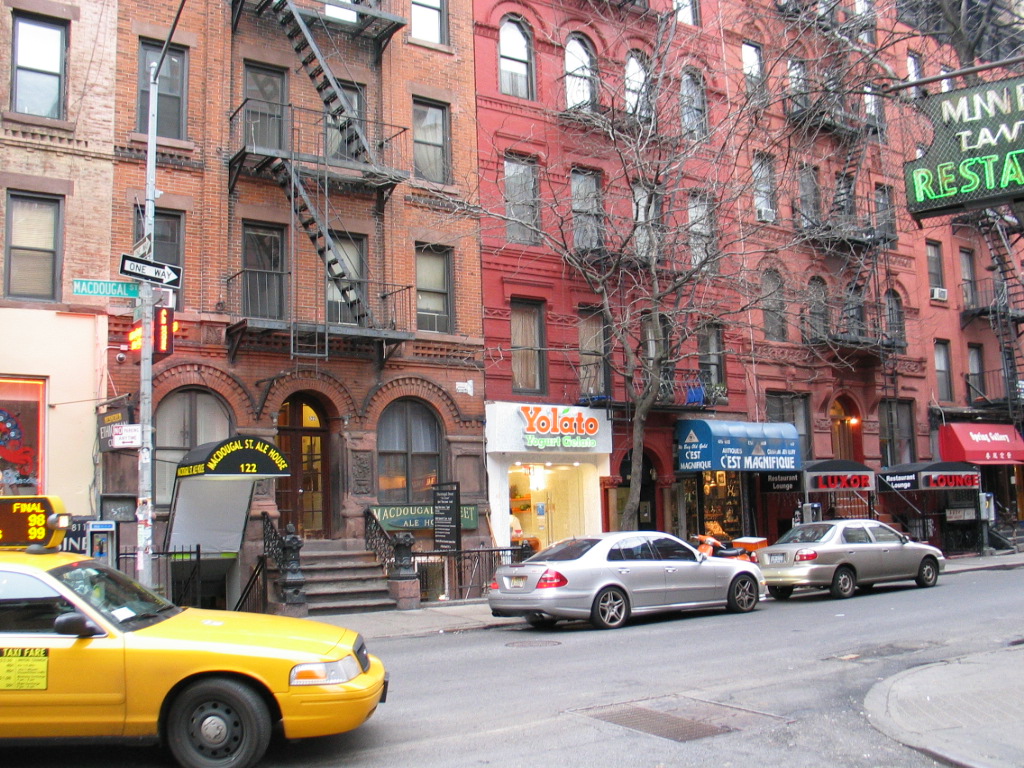|
My Sister Eileen (1942 Film)
''My Sister Eileen'' is a 1942 American comedy film directed by Alexander Hall and starring Rosalind Russell, Brian Aherne and Janet Blair. The screenplay by Joseph A. Fields and Jerome Chodorov is based on their 1940 play of the same title, which was inspired by a series of autobiographical short stories by Ruth McKenney originally published in ''The New Yorker''. The supporting cast features George Tobias, Allyn Joslyn, Grant Mitchell, Gordon Jones and, in a cameo appearance at the end, The Three Stooges (Moe Howard, Larry Fine and Curly Howard). Plot Anxious to help boost the career of her aspiring actress sister Eileen, reporter Ruth Sherwood of the ''Columbus Courier'' writes a rave review about her performance in a local play before it opens. When Eileen is replaced on opening night and the newspaper mistakenly runs the inaccurate review, Ruth is fired. Grandma Sherwood urges Ruth to move to New York City and Eileen decides to go with her. Relying solely on $100 given ... [...More Info...] [...Related Items...] OR: [Wikipedia] [Google] [Baidu] |
Alexander Hall
Alexander Hall (January 11, 1894 – July 30, 1968) was an American film director, film editor and theatre actor. Biography Hall acted in the theatre from the age of four through 1914, when he began to work in silent movies. Following his military service in World War I, he returned to Hollywood and pursued a career in film production. He worked as a film editor and assistant director at Paramount Pictures until 1932, when he directed his first feature film, ''Sinners in the Sun''. From 1937 to 1947, he was a contract director at Columbia Pictures, where he earned a reputation for sophisticated comedies. He was nominated for the Academy Award for Best Director for ''Here Comes Mr. Jordan'' (1941). From 1934 to 1936, Hall was married to actress Lane Sisters, Lola Lane. He was also married to Marjorie Hunter. In 1952 Hall had a home in Palm Springs, California. He was engaged briefly to Lucille Ball, who left him when she met Desi Arnaz. The couple later hired him to direct their ... [...More Info...] [...Related Items...] OR: [Wikipedia] [Google] [Baidu] |
Autobiography
An autobiography, sometimes informally called an autobio, is a self-written account of one's own life. It is a form of biography. Definition The word "autobiography" was first used deprecatingly by William Taylor in 1797 in the English periodical ''The Monthly Review'', when he suggested the word as a hybrid, but condemned it as "pedantic". However, its next recorded use was in its present sense, by Robert Southey in 1809. Despite only being named early in the nineteenth century, first-person autobiographical writing originates in antiquity. Roy Pascal differentiates autobiography from the periodic self-reflective mode of journal or diary writing by noting that " utobiographyis a review of a life from a particular moment in time, while the diary, however reflective it may be, moves through a series of moments in time". Autobiography thus takes stock of the autobiographer's life from the moment of composition. While biographers generally rely on a wide variety of documents an ... [...More Info...] [...Related Items...] OR: [Wikipedia] [Google] [Baidu] |
June Havoc
June Havoc (born Ellen Evangeline Hovick; November 8, 1912 – March 28, 2010) was a Canadian American actress, dancer, stage director and memoirist. Havoc was a child vaudeville performer under the tutelage of her mother Rose Thompson Hovick, born Rose Evangeline Thompson. She later acted on Broadway theatre, Broadway and in Hollywood, and stage-directed, both on and off-Broadway. She last acted on television in 1990 in a story arc on the soap opera ''General Hospital'', and she last appeared on television as herself in interviews in the "Vaudeville" episode of ''American Masters'' in 1997 and in "The Rodgers & Hart: Thou Swell, Thou Witty" episode of ''Great Performances'' in 1999. Her elder sister Louise gravitated to American burlesque, burlesque and became the well-known striptease performer Gypsy Rose Lee. Early life Ellen Evangeline Hovick was born in Vancouver, British Columbia, Canada. For many years 1916 was cited as her year of birth. Havoc acknowledged in her late ... [...More Info...] [...Related Items...] OR: [Wikipedia] [Google] [Baidu] |
Richard Quine
Richard Quine (November 12, 1920June 10, 1989) was an American director, actor, and singer. He began acting as a child in radio, vaudeville, and stage productions before being signed to Metro-Goldwyn-Mayer in his early twenties. When his acting career began to wane after World War II, Quine began working as a film director. He later moved into producing and directing television. Quine's films as director include ''Bell, Book and Candle'' (1958), ''The World of Suzie Wong'' (1960), ''Paris When It Sizzles'' (1964), ''How to Murder Your Wife'' (1965), and ''The Prisoner of Zenda'' (1979). Career Child actor Born in Detroit, Quine's father was an actor. Quine's family moved to Los Angeles when he was six years old. As a child, he began working as a radio actor and became a minor radio star. He then appeared in vaudeville before moving on to stage roles. Quine made his film debut in the drama ''Cavalcade'' (1933). He could also be seen in ''The World Changes'' (1933) (alongside a ... [...More Info...] [...Related Items...] OR: [Wikipedia] [Google] [Baidu] |
Elizabeth Patterson (actress)
Mary Elizabeth Patterson (November 22, 1874 – January 31, 1966) was an American theatre, film, and television character actress who gained popular recognition late in her career playing the elderly neighbor Matilda Trumbull on the television comedy series ''I Love Lucy''. Early years Born in Savannah, Tennessee, she was the child of Mildred (''née'' McDougal) and Edmund D. Patterson, a Confederate army veteran."United States Census of 1880" Fourth Civil District, Hardin County, Tennessee, enumeration dates June 22-23, 1880. Digital copy of original enumeration page available at , a free online genealogical database provided as a public service by The Ch ... [...More Info...] [...Related Items...] OR: [Wikipedia] [Google] [Baidu] |
Cameo Appearance
A cameo role, also called a cameo appearance and often shortened to just cameo (), is a brief appearance of a well-known person in a work of the performing arts. These roles are generally small, many of them non-speaking ones, and are commonly either appearances in a work in which they hold some special significance (such as actors from an original movie appearing in its remake) or renowned people making uncredited appearances. Short appearances by celebrities, film directors, politicians, athletes or musicians are common. A crew member of the movie or show playing a minor role can be referred to as a cameo role as well, such as Alfred Hitchcock's frequent cameos. Concept Originally, in the 1920s, a "cameo role" meant "a small character part that stands out from the other minor parts". The ''Oxford English Dictionary'' connects this with the meaning "a short literary sketch or portrait", which is based on the literal meaning of " cameo", a miniature carving on a gemstone. More re ... [...More Info...] [...Related Items...] OR: [Wikipedia] [Google] [Baidu] |
Theatre Producer
A theatrical producer is a person who oversees all aspects of mounting a theatre production. The producer is responsible for the overall financial and managerial functions of a production or venue, raises or provides financial backing, and hires personnel for creative positions (writer, director, designers, composer, choreographer—and in some cases, performers). The independent producer usually initiates the production—finding the script and starting the process. The producer finds the director and pursues the primary goals, to balance and coordinate business and financial aspects in the service of the creative realization of the playwright's vision. This may include casting, but often only includes casting approval. The producer may secure funds for the production, either through their own company or by bringing investors into the production in a limited partnership agreement. In this business structure, the producer becomes the general partner with unlimited liability, and ... [...More Info...] [...Related Items...] OR: [Wikipedia] [Google] [Baidu] |
Conga Line
The conga line is a novelty line dance that was derived from the Cuba Cuba ( , ), officially the Republic of Cuba ( es, República de Cuba, links=no ), is an island country comprising the island of Cuba, as well as Isla de la Juventud and several minor archipelagos. Cuba is located where the northern Caribbea ...n carnival Conga (music), dance of the same name and became popular in the US in the 1930s and 1950s. In order to perform the dance, dancers form a long, processing line, which would usually turn into a circle dance, circle. It has three shuffle steps on the beat, followed by a kick that is slightly ahead of the fourth beat. The conga, a term sometimes mistakenly believed to be derived from the African Kingdom of Kongo, region of Congo, is both a lyrical and danceable genre, rooted in the music of carnival troupes or comparsas.Davis, Pablo Julian. "Conga", ''People, History, Culture of Cuba''. Luis Martinel-Fernandez, D.H. Figneredo, Louis A. Perez, Jr. and Luis Go ... [...More Info...] [...Related Items...] OR: [Wikipedia] [Google] [Baidu] |
Greenwich Village
Greenwich Village ( , , ) is a neighborhood on the west side of Lower Manhattan in New York City, bounded by 14th Street to the north, Broadway to the east, Houston Street to the south, and the Hudson River to the west. Greenwich Village also contains several subsections, including the West Village west of Seventh Avenue and the Meatpacking District in the northwest corner of Greenwich Village. Its name comes from , Dutch for "Green District". In the 20th century, Greenwich Village was known as an artists' haven, the bohemian capital, the cradle of the modern LGBT movement, and the East Coast birthplace of both the Beat and '60s counterculture movements. Greenwich Village contains Washington Square Park, as well as two of New York City's private colleges, New York University (NYU) and The New School. Greenwich Village is part of Manhattan Community District 2, and is patrolled by the 6th Precinct of the New York City Police Department. Greenwich Village has underg ... [...More Info...] [...Related Items...] OR: [Wikipedia] [Google] [Baidu] |
New York City
New York, often called New York City or NYC, is the List of United States cities by population, most populous city in the United States. With a 2020 population of 8,804,190 distributed over , New York City is also the List of United States cities by population density, most densely populated major city in the United States, and is more than twice as populous as second-place Los Angeles. New York City lies at the southern tip of New York (state), New York State, and constitutes the geographical and demographic center of both the Northeast megalopolis and the New York metropolitan area, the largest metropolitan area in the world by urban area, urban landmass. With over 20.1 million people in its metropolitan statistical area and 23.5 million in its combined statistical area as of 2020, New York is one of the world's most populous Megacity, megacities, and over 58 million people live within of the city. New York City is a global city, global Culture of New ... [...More Info...] [...Related Items...] OR: [Wikipedia] [Google] [Baidu] |
Curly Howard
Jerome Lester Horwitz (; October 22, 1903 – January 18, 1952), known professionally as Curly Howard, was an American actor and comedian. He was best known as a member of the American comedy team the Three Stooges, which also featured his elder brothers Moe and Shemp Howard and actor Larry Fine. In early shorts, he was billed as Curley. Curly Howard was generally considered the most popular and recognizable of the Stooges. He was well known for his high-pitched voice and vocal expressions ("nyuk-nyuk-nyuk!", "woob-woob-woob!", "soitenly!" ertainly "I'm a victim of soikemstance", and barking like a dog), as well as his physical comedy (e.g., falling on the ground and pivoting on his shoulder as he "walked" in circular motion), improvisations, and athleticism. An untrained actor, Curly borrowed (and significantly exaggerated) the "woob woob" from "nervous" and soft-spoken comedian Hugh Herbert. Curly's unique version of "woob-woob-woob" was firmly established by the time of the ... [...More Info...] [...Related Items...] OR: [Wikipedia] [Google] [Baidu] |
Larry Fine
Louis Feinberg (October 5, 1902 – January 24, 1975), known professionally as Larry Fine, was an American actor, comedian, and musician. He is best known as a member of the comedy act the Three Stooges. Early life Fine was born to a Russian Jewish family at 3rd and South Street (Philadelphia), South Street in Philadelphia, Pennsylvania, on October 5, 1902. His father, Joseph Feinberg, and mother, Fanny Lieberman, owned a watch repair and jewelry shop. In his early childhood, Fine's arm was accidentally burned with hydrochloric acid, acid that his father used to test jewelry for its gold content.Cox, Steve, and Jim Terry (2006). ''One Fine Stooge: Larry Fine's Frizzy Life in Pictures''. Nashville: Cumberland House. p. 7. . The young Fine picked up the bottle and accidentally spilled it on his forearm, causing extensive damage to it. Fine's parents later gave him violin lessons to help strengthen the damaged muscles in his forearm. He became so proficient in it that his parents ... [...More Info...] [...Related Items...] OR: [Wikipedia] [Google] [Baidu] |






_2_(cropped).jpg)